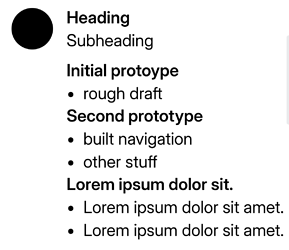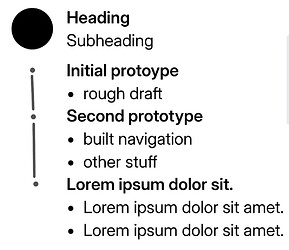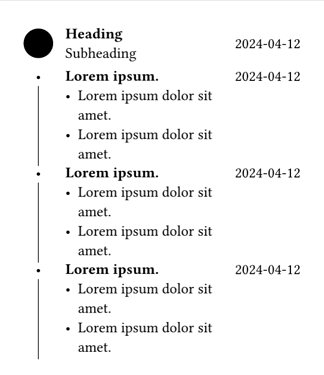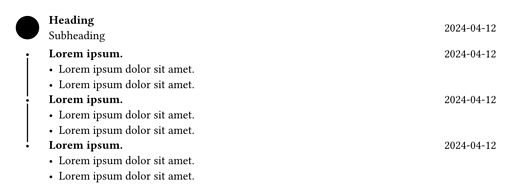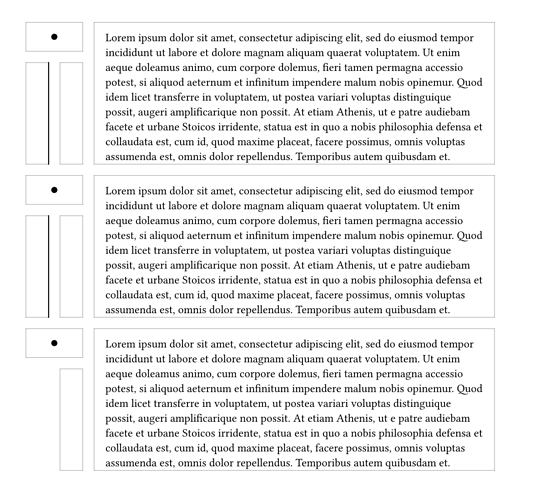I am currently flabbergasted as to how to draw a vertical line in another grid column with start and end points aligned with content in another column.
I would like to draw a kind of timeline connecting items. I tried measuring and getting positions but the line interface did not work with that.
Current:
Desired:
Example code:
#let date = [2024-04-12]
#let row = (
[],
{
strong(lorem(2))
[
- #lorem(5)
- #lorem(5)
]
},
align(top, date),
)
#grid(
inset: (left: 0mm, rest: 1mm),
columns: (auto, 1fr, auto),
column-gutter: 0.3em,
row-gutter: 0.1em,
..(
box(height: 2.5em, width: 2.5em, inset: 1mm, circle(fill: black)),
[#strong[Heading] \ Subheading],
date,
).map(
align.with(horizon),
),
..(row * 3).flatten(),
)
